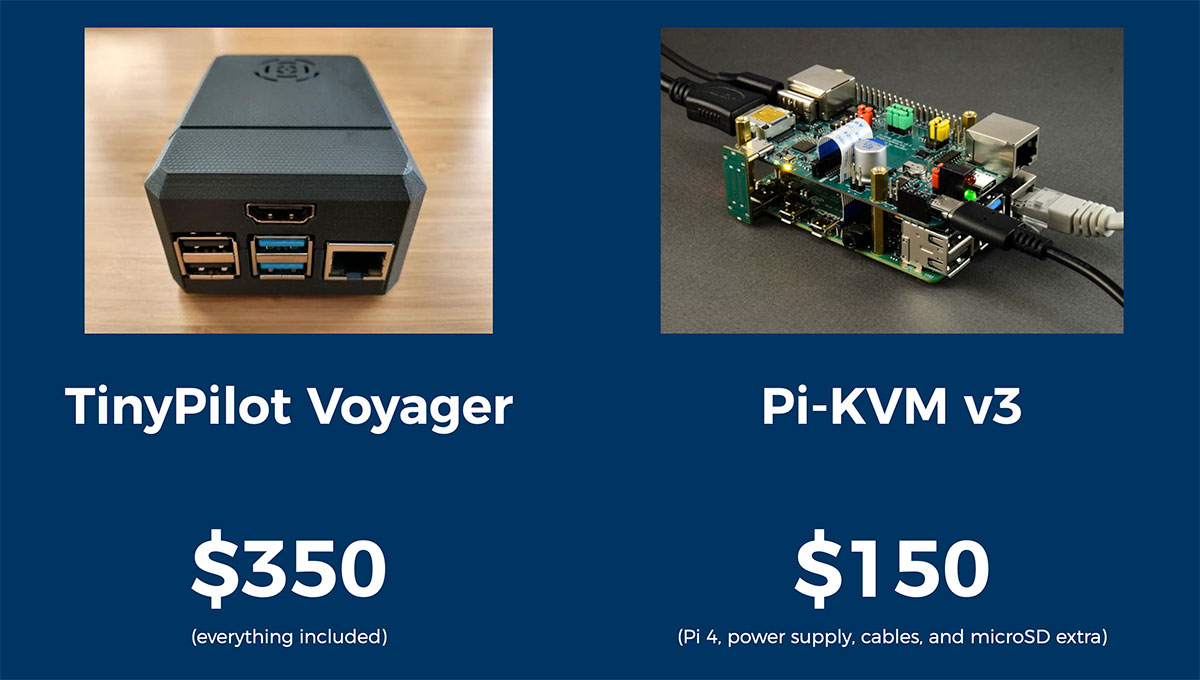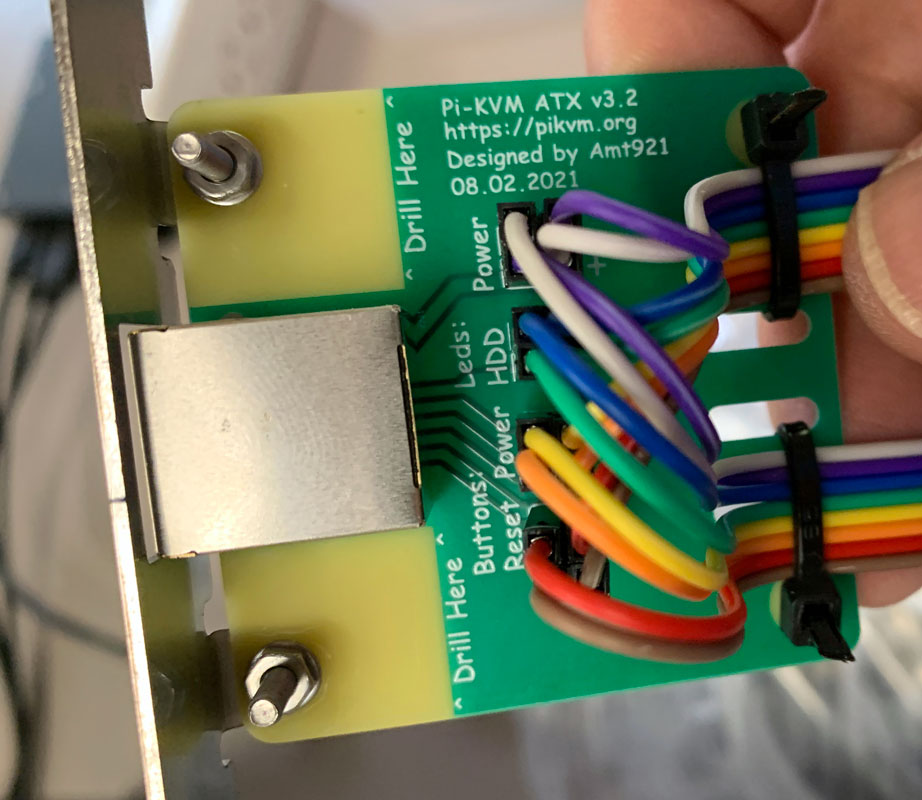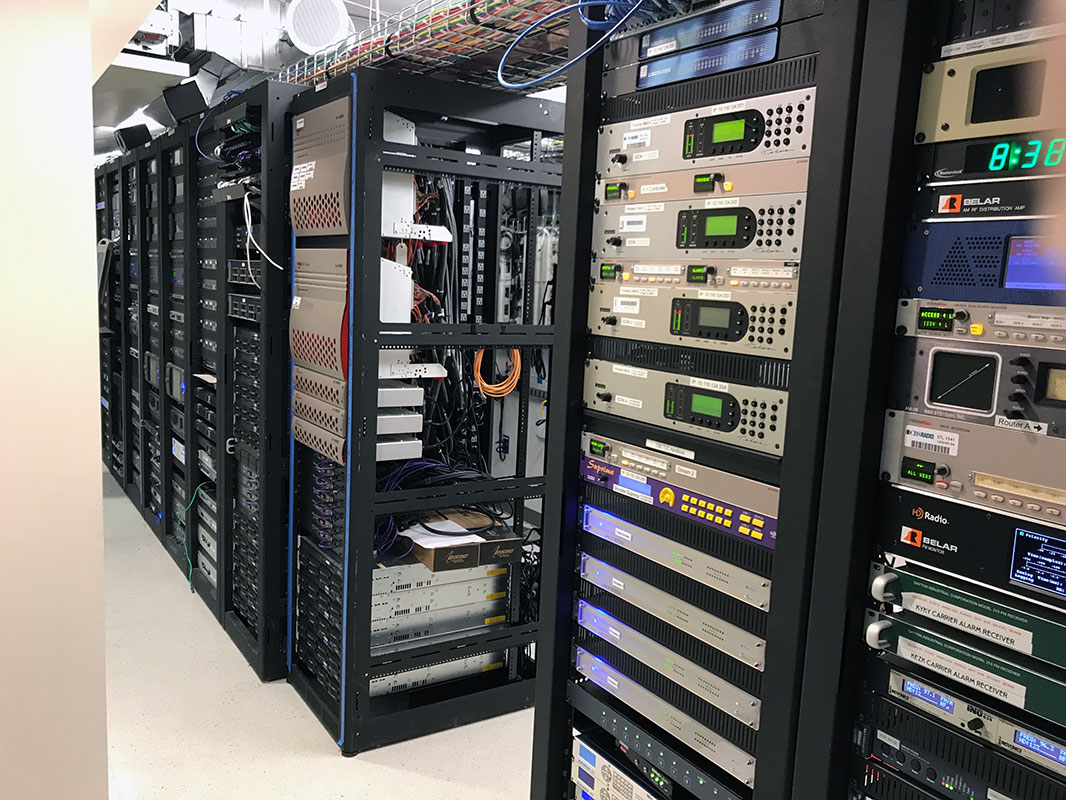In a strange coincidence, the authors of TinyPilot and Pi-KVM both emailed me within a week of each other and asked if I'd be interested in one of their KVM devices.

Michael Lynch, founder of Tiny Pilot, said he'd used some of my Ansible work in building the TinyPilot update system, and Maxim Devaev, of Pi-KVM, liked my Pi open source content, and wanted to see what I thought of the new v3 kit that's currently on Kickstarter.
I took them both up on the offer, and dug into both devices.
Both have HDMI and USB inputs, so you can plug them into any Mac or PC and get full control, up to and including BIOS/UEFI settings, remote desktop management (with no software on the managed computer), and mounting of USB ISO images for re-installing an OS or maintaining a system.

But the Pi-KVM goes even further with hardware ATX support for things like pressing the physical power button, pressing the reset button, and monitoring the power and status LEDs through the motherboard.
It also seems to have a bit more of the 'hacker' mentality in all things around it, including the code, the DIY aspects, and even the full v3 kit that comes with some assembly required, and also doesn't include a Pi 4 model B or a pre-flashed microSD card.
The TinyPilot Voyager, on the other hand, comes with everything set up, ready to go. It's truly a plug-and-play experience.
But you pay for that! It's a bit more expensive than a Pi-KVM v3, even after the price of all the additional parts is factored in. The TinyPilot Voyager is $350, though there's a Kit version with a little less panache for less than $200. The Pi-KVM is $150 currently, but as mentioned requires some additional accessories, including a Raspberry Pi.
I made a video reviewing both devices in a bit more detail, and I also included an in-depth review / interview with my Dad, who's a radio engineer, and has a lot more experience than I do deploying KVMs.

His main studio facility in St. Louis feeds over 40 remote tower sites for different radio stations, and as the sole engineer for his radio network, he needs as much remote control as he can get—otherwise when stations go off the air, it's time for someone to hop in a car and get to the broken computer!
Check out the full video for that interview and my final thoughts on these two KVM devices:
Comments
Hey, A TnyPilot Voyager2 user here with 2+ years of experience. The thing works flawlessly for months until it dies. Just like any standard raspi-based solution it is not a professional device due to single design failure: the SD card. Even with the filesystem mounted read-only the thing will eventually break and after a power loss you at some point you will lose remote access exactly when you need it the most: after the power loss.
You can rebuild the card in 10 min or so (provided you have saved the image and truncated it to the content of the partitions so you can write it back to a new SD card no matter the exact capacity of it; search for pishrink project on github to shrink the originam 32GB image to abut 1.7GB).
I had to rebuild the SD card on mine about 3 times and when if failed again this year I changed the card so SanDisk so time will tell if it will last longer than a year.
I use mine to share a laptop so a day or two of downtime is not a big deal however using it to provide remote management access to a host with a server role is not the best idea.
Maybe pikvm deployed on CM4 with eMMC would make the solution more professional.
Other than that the KVM over IP works great. Of course it cannot compare to iDRAC or ILO pf a real server (no hw monitoring, no firmware management, maybe remote storage support but have not tired any recent version of tinypilot).